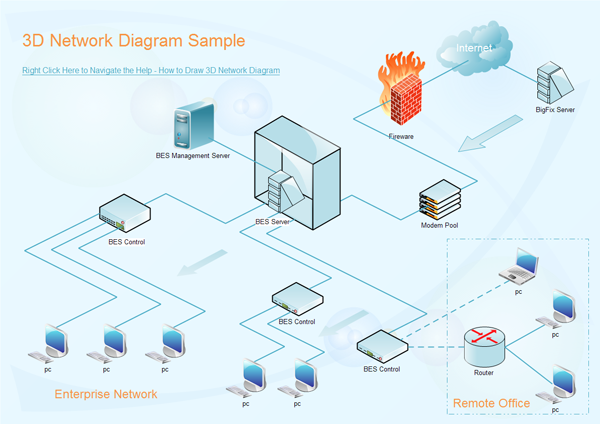So I'm pretty sure its not a network issue since the iMac can see the MacBook fine and the MacBook can 'technically' see the iMac. Also, if I manually connect to a shared drive on one of the PC's or the iMac via 'Connect to Server' the connection is fine and appears on the sidebar (however its named as the IP address of the shared drive and is. Download and install the best free apps for Network Management Software on Windows, Mac, iOS, and Android from CNET Download.com, your trusted source for the top software picks. A dedicated Host Viewer is provided to view information related to discovered hosts. These information include IP Address, Operating System info (used ports, class, etc.), TCP Sequences, Services, Traceroute, etc. Nmap is a feature rich network discovery and network mapping software.
| Click here to return to the 'How to find devices on your local network' hint |

The output of the ifconfig command in the terminal will tell you the
broadcast address to use for each interface. For example:
en1: flags=8863<UP,BROADCAST,SMART,RUNNING,SIMPLEX,MULTICAST>
mtu 1500
inet 10.50.6.8 netmask 0xffffff00 broadcast 10.50.6.255
once you've executed the xxx.xxx.xxx.255 broadcast ping, type 'arp -a' and it will
show you a list of known IPs and their associated ethernet mac address. match
the ethernet mac address to the label that is most likely attached to the back/
side/bottom of your device, and you're done.
Mac Network Settings
or if you have a recent build of nmap installed, you can use the following to scan the whole subnet:
nmap -sP 192.168.1.1/24substitute your IP range and subnet, of course.
2 questions. What if the device doesn't respond to ping. I can't tell you how
many times I've seen that. Also, what if you have a device that was configured
with a static IP on another network and then brought to yours and you don't
know what it's set to. If you know the MAC address, can you find it on the
network and configure it that way?
Jeff
If it doesn't respond to ping, you can still find the address like so:
This will ping every address in your subnet (Adjust the local address as needed, and if your block is larger than a /24 you'll have to modify the script accordingly) and then show every machine that responded to the arp request. Even if it doesn't respond to a ping, it'll respond to the arp request. The ping is just used to generate the arp request.
I've used this to locate APs that blocked pings by default.
Pardon my stupidity, but when I type that straight into terminal, I get '-bash:
255: No such file or directory' and when I put it in ultraping.sh and do a 'sh
ultraping.sh' I get 'ultraping.sh: line 2: 255: No such file or directory'. How do I
use your instructions and can I make it into a command line command script?
Thanks in advance.
Jeff
Whoops. I make a mistake in my original post.
x=0
while [ $x -lt 255 ]; do
ping -c 1 192.168.1.$x &
x=$(expr $x + 1)
done
# Wait a few seconds for the pings above to finish
arp -a
Hopefully that works for people where my original didn't. :)
Ummm... I have Mac OS X 10.4.6 running and I tried the command and it works,
but it keeps looping? I don't get it. Can anyone help?
pings will keep going until you end it with <cntrl-c>
Aah. Simple. Many thanks!
if you type a -c# flag after the ping command it will only report back once, as in:
ping -c2 192.168.1.255
...as said, ctrl + C or – in Apples Terminal – Command + '.'
---
this is not the sig you`re looking for.
If you want to learn a little more about what is going on you might want to read
this page:
http://www.comptechdoc.org/independent/networking/guide/netbroadcasting.html
Knowing EVERYTHING about IP addressing was part of my CompTIA and MCSE
certifications.
Mac Software To View Devices In Network Windows 7
Wow! You know everything about something? Great job! Now you just have to
learn not to tell people that ; )
With Static IPs, the broadcast address, as listed in the hint, most likely won't work. So you need to find your broadcast addy! Just type the following:
ifconfig -a
This gives a big list. Under either 'eth0' or 'lo0' you will find an entry like:
en0: flags...
...
inet xx.xx.173.212 netmask 0xffffffe0 broadcast xx.xx.173.223
...
That xx.xx.173.223 is my broadcast, and it does the trick when I ping it.
---
-Pie
Just to let everyone know. The address to ping on a AirPort network is 10.0.1.255.
Check the network panel of system prefrences to see your IP address and replace
the last digits with 255, as explained above.
http://www.macosxhints.com/article.php?story=20041010213347605
Just to clarify:
The amount of 255's must equal the number of 0's in the subnet mask. IE, if you
have a subnet mask of 255.255.255.0, the ping is x.x.x.255, if you have a subnet
mask of 255.255.0.0 the ping is x.x.255.255 and so on.
 Here's a modifies version which works on my system:
Here's a modifies version which works on my system: Viewing Network Device Mac Addresses
x=0
while [ '$x' -lt '255' ]; do
ping -c 1 10.0.0.$x &
x=$(expr $x + 1)
done
# Wait a few seconds for the pings above to finish
arp -a
Mac Software To View Devices In Network Tv
I believe the problem lies in the rather unique status this address range has. (A brief discussion of this may be found at http://www.duxcw.com/faq/network/autoip.htm).---
--
Device Mac Address Laptop
This won't find static IP address on your LAN, but it does give the NAMES of the devices it does find. Yeay for human readability! :)